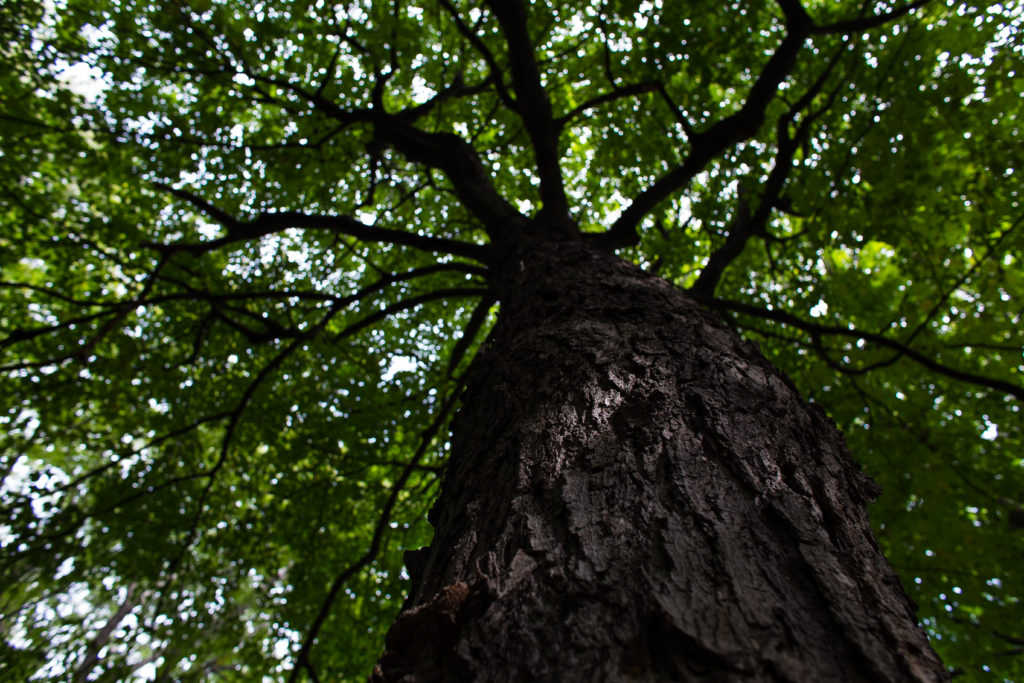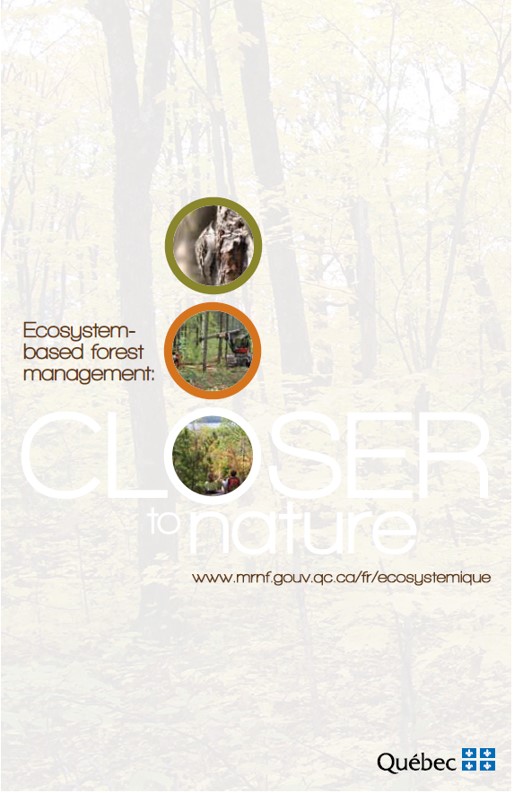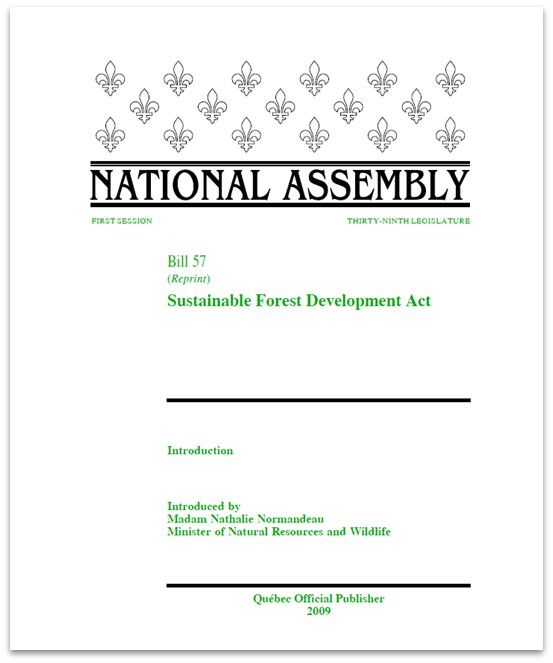Overview
Close to Nature is the expression used to describe forest management that treats forests as an ecosystem performing multiple functions. Closer to Nature is the Quebec government’s adaptation of the Close to Nature school of thought applied to its boreal forest management. This approach applies the minimum necessary human intervention to encourage and hasten natural processes. It manages forests as if they are self-regulating ecosystems, guided by diverse human use.
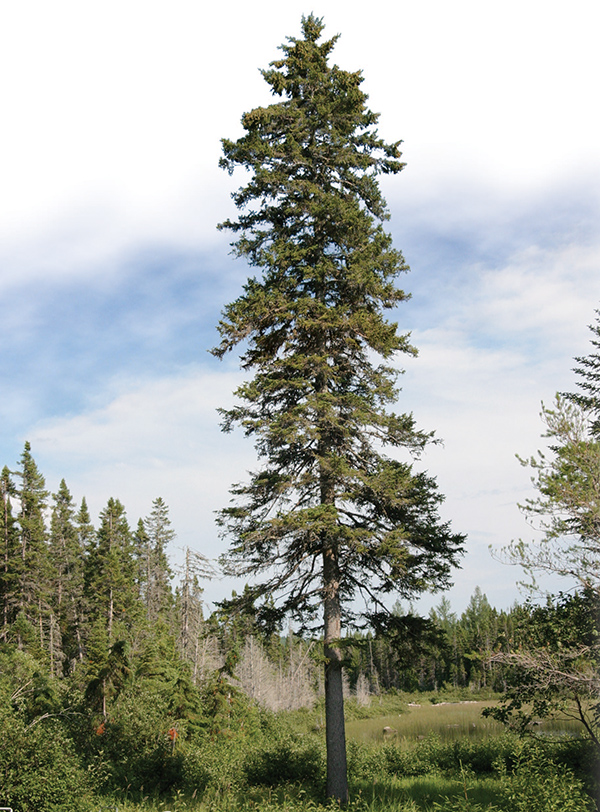
Photo credit: afsq.org
Background
In the 1990s, it became apparent to foresters in Quebec that their boreal region was being harvested unsustainably. Guided by the now widely discussed principles of EBM, concepts of resource extraction emulating natural processes were being proposed around the world. Seizing upon a European movement called Close to Nature, the Government of Quebec moved quickly to enshrine natural disturbance emulation and EBM into a policy initiative they called Closer to Nature.
The Closer to Nature policy attempts to reduce differences between managed and natural forests, creating landscapes with high biodiversity and irregularity. It is enshrined in Quebec’s Sustainable Forest Development Act and considers the ecological, economic and social consequences of forest management. This is one of the first examples of EBM being written into Canadian provincial forestry policy.
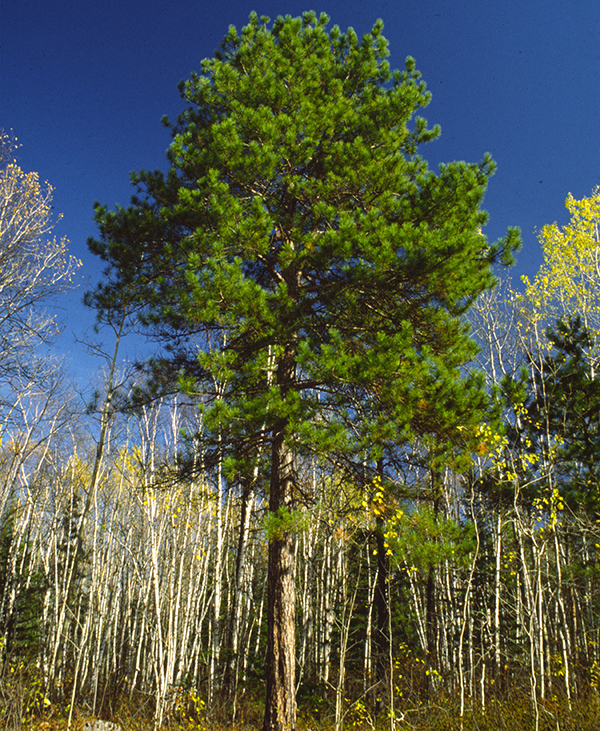
Photo credit: afsq.org
Innovation
Communities across the boreal region depend on forest products. It is the very nature of slow-growing forests that has prompted many government regulators to enact a tenure system that gives companies long-term responsibility over forested landscapes as a way of providing incentives for responsible short-term management; if you are empowered to extract benefit from a future forest, you will better care for today’s forest.
The innovation is, in fact, a move “Closer to EBM”. As has been articulated by Dave Andison, EBM is aspirational, such that any processes that nudge regulations towards managing forests for ecosystem based outcomes is innovative.
Discovery
Legal analysis of Quebec’s Sustainable Forest Development Act has identified considerable ambiguity in its ability to change forest management for anything other than commercial timber values. Closer to Nature implementation has taken the form of Hierarchical Forest Management Planning that can neither ensure sustainability nor optimize resource value. Although a complete system of indicators to determine policy effectiveness is incomplete, an audit of forest sustainability concluded that indicators of unsustainability demonstrate low risk. A recent review of the effect of Closer to Nature on restoring Quebec’s forests finds that variable retention has had some positive effects but gaps between managed and unmanaged stands persist.
This information draws on the following sources: The Quebec Sustainable Forest Development Act, Paradis, G. 2016. Hierarchical Forest Management Planning A Bilevel Wood Supply Modelling Approach. Universite Laval., Tittler, R., C. Messier, and P. J. Burton. 2001. Hierarchical forest management planning and sustainable forest management in the boreal forest. Forestry Chronicle 77:998–1005. Schneider, R., Dupont-Leduc, L., Gauthray-Guyénet, V., Cattaneo, N., LaraMelo, Simard, T., Begni, A., Turquin, R., Morache-Mercier, A., Pinna, S., Rémillard, U., and Nock, C. 2021. Close-to-nature silviculture in eastern Quebec: advances over the last decade. The Forestry Chronicle 97: 1–13.
Where in the wheel?
EBM’s ‘dirty dozen’ elements include a blend of top-down and bottom-up activities. Success will entail a meeting in the middle. Together with Ontario’s 1994 Crown Forest Sustainability
Act, Quebec’s policies were a bold move towards leading both governments and industry in Canada towards EBM.

